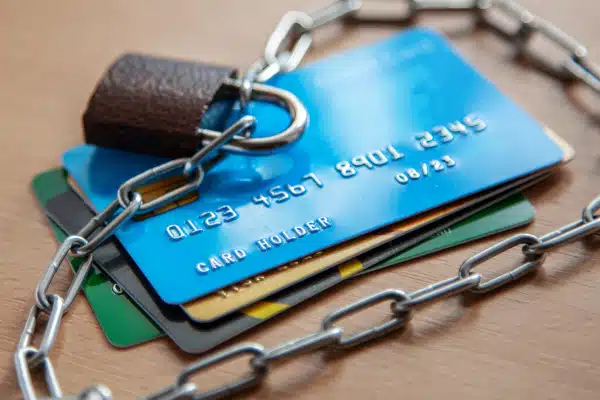
Traveling is the dream of many people, and also the main reason to start saving money. Getting to know new places, going shopping… Who doesn’t want this to stop being just a dream and become reality?
However, planning the “before, during and after” of a trip is not exactly the simplest thing to do. After all, how do you know how much money to save? And how much to take with me to spend on the spot? What should I do not to come home in the red?
These are some of the most recurring questions about how to plan for a trip. So, if you are interested in knowing how to make a successful financial planning for travel, check out some tips to avoid blowing your budget!
8 key tips to make the financial plans for your dream trip
Travel is all good! But the previous step is usually ignored by many people, sometimes because everything happens at the last minute and other times because of a simple lack of organization or laziness.
Many don’t even know how to plan a trip efficiently and financially. Making plans, in general, is a routine of few who have learned, at home or in life, that this time is valuable and very beneficial for when the activities are actually executed.
If you are one of the people who doesn’t know how to organize for a trip, no problem! Check out the following tips and start planning your next vacation today.
1. Start saving
The first step to traveling is, obviously, to have some money saved! Usually, financial difficulty is what keeps people from traveling more. This means that it is very worthwhile to set up good financial planning long before the date you are going to travel.
Start by writing down all your household’s monthly income, as well as your most usual expenses. However small they may be, write them down, because they can make a difference at the end of the month. The secret to good financial planning for travel is in the accurate gathering of data. So don’t underestimate the price of that “cup of coffee at the office” every morning, right?
From there, make an analysis of what can be cut or cut back in order to save some money each month. Ideally these savings should be around 10% of the family’s total income, but if you can’t, start with less.
Another possibility is to get an extra source of income. This way you don’t have to cut back on too much and can earmark all the money you earn for the trip.
Finally, don’t forget to leave this money working! Do not keep it under your mattress or in the safe. Saving is not the best option either, since today there are safer and more profitable alternatives, such as:
- Credit cards (Cash Back, Points and Miles Program);
- Investments with daily liquidity;
- Real Estate Funds;
This way, while your trip is not arriving, your money is working to pay you a little bit more when the time comes!
2. Make an analysis of the costs of the trip
Now that you have started to save money for your trip, the next step is to make a detailed analysis of the expenses involved in the journey.
Start with the most basic costs: airfare, lodging, and food. By understanding the expenses that this part brings you, you’ll already have a good idea about the amount you’re going to spend on your dream. And it doesn’t matter if you can’t be 100% precise in your calculations, what matters is that you are prepared beforehand.
Furthermore, it’s worth deciding right away the profile of your trip: will it be luxurious or simple? Will you focus on shopping or entertainment? Or do you just want to relax on a beach? Take this decision as a guideline when creating your budget.
Its important, however, not to go one step further than the other: plan a realistic trip for your standard of living. If at the moment you can’t afford to be ostentatious, no problem! With good financial planning for travel, this won’t be the only trip of your life.
3. Use your miles
For those who use credit cards a lot in their routine, its worth, in your financial planning for travel, to count on loyalty programs. With them, you can exchange your accumulated points for airline miles, among other awards.
This will help pay for part of the trip’s expenses, such as airline tickets or car rentals, for example.
To be sure about how to proceed, make a survey of your points in each card (do not forget that in most programs the points have an expiration date). Also research what benefits you can receive from each of them, such as VIP lounges at airports, concierge service, discounts on attractions, among others.
4. Use technology in your favor
To set up your trip, technology can be a great ally. Make simulations of airfare prices, and a budget survey of hotels where you would like to stay.
There are great online mechanisms and applications that can help you at this time. An example are the financial control apps, which allow you to register your expenses and income. On the internet, look also for blogs of people who have already traveled to the place, and find out what is the average price they spent on meals.
With these tips, you can put together a detailed itinerary of what you intend to do at your destination, which will make it easier to set up an accurate budget.
Don’t forget to find out, also, the prices of tours and tickets of the places you intend to visit. If possible, include an extra amount in this account, because it is very likely that you and your family will find something new to do during the trip that was not part of the planning.
5. Carry some extra cash
We all know that a trip is not only about food and leisure, right? Therefore, always leave extra money available for emergencies. Even with health insurance and everything planned, unforeseen events do happen.
Even more so if your trip is abroad, don’t forget that dealing with a problem out of the country is completely different than when you are here: many times, over there, you’ll have no one to turn to in time of need.
If you are traveling with your children, the control of this extra money must be doubled! It’s very easy to spend money with children in these situations, but see the experience as an opportunity to teach your family financial education!
Tell them before the trip how and when to spend the money, and don’t be afraid to follow the advice to the letter. Imposing limits on spending is important and a valuable lesson that your children will carry with them for life.
6. Set limits on your purchases
In the previous tip we talked about the importance of having extra funds to spend on the trip. But be careful not to get out of control: take an exact amount that you can spend on shopping and the like, and stick to that budget.
We know that when traveling there are many different products, souvenirs, goodies and more. Therefore, the ideal is that this extra amount is available in cash, because then the chances of getting lost in the shopping diminish.
Make a good analysis of how much you intend to spend on clothes, general shopping, gifts and souvenirs, and stick to each of these amounts.
Of course you can manage this money: if you didn’t buy much chocolate, for example, it’s okay to spend the rest of the budget on clothes. The important thing is not to use money you don’t have, for shopping.
7. Be careful when using your credit card
Many people take cards and cards to use abroad, forgetting that, one day, they will return from their trips and will have to bear the costs of the invoices. This is a fatal mistake for those who intend to return from a trip with peace of mind, and without having ruined their financial life.
Having international cards is great, and can effectively help you a lot during your trip. Just be sure to use them sparingly, right?
Also, be careful with the costs when buying abroad. Do you know the fees involved in using your card for international purchases? If not, try to get informed and understand the best way to spend. Sometimes it is worth having a prepaid card, which you just load with the money you intend to use and spend it along the trip. This is also a good option for those who have little financial control!
8. Review everything after the trip
After enjoying your trip and returning home, it’s time to review your financial planning and understand what worked and what didn’t.
Was the trip well planned? Did you stay within budget? Did anything happen that you had not anticipated? If you spent too much, what happened?
Putting everything on paper and asking yourself these questions will help you improve your travel financial planning skills. In the future you’ll be better organized and more likely to get it right.
See how easy it is to travel without screwing up your financial life?
It’s all a matter of planning exactly what you should spend and, during the trip, not exceeding the established limits.
So now that you know how to plan your next trip and how to control your spending during the period you are traveling, all you have to do is choose your destination and start saving.
Was this article useful for you? If so, share it with your friends so that together we can help more people! And don’t forget to keep following the Finance ADX blog to check out other financial education tips.
I’m sure that with our guidelines you will travel much more relaxed and without having to worry about finances when you get back home! Have a good trip!

 South Africa’s Capitec profit rises 84%
South Africa’s Capitec profit rises 84%  5 types of scams to not fall and keep your money safe
5 types of scams to not fall and keep your money safe  Remote Work in South Africa vs. Your Boss’s Decision
Remote Work in South Africa vs. Your Boss’s Decision